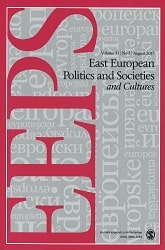Ghosts of the Habsburg Empire: Collapsing Currency Unions and Lessons for the Eurozone
Ghosts of the Habsburg Empire: Collapsing Currency Unions and Lessons for the Eurozone
Author(s): Stephen G. Gross, S. Chase GummerSubject(s): Supranational / Global Economy, Economic history, Economic policy, Economic development, Interwar Period (1920 - 1939), Financial Markets
Published by: SAGE Publications Ltd
Keywords: Habsburg Monarchy; economic history; European Union; euro; banking crisis;
Summary/Abstract: Today the Eurozone faces financial and economic problems that, if left untended, threaten the fate of the EU itself. Several paths lay open to European leaders: deeper integration, more piecemeal crisis resolution, or a possible exit from the Euro of one or more countries. Yet there are few historical examples of a currency union break-up that we can use to understand implications of the third option. This essay draws lessons from the collapse of the Habsburg Empire after World War I—the best historical case study of a disintegrating currency union—for the Eurozone. The creation of new national currencies in Central Europe in the 1920s came at a very high cost, took years to stabilize, involved extensive international monitoring, created great risks for Europe’s multinational banking enterprises, and helped create the conditions for economic instability in the 1930s. European leaders could expect similar challenges to arise were Greece, Portugal, or Spain to exit the Eurozone today. One crucial factor absent in the 1920s, and still absent today, was and is a robust European-wide financial regulatory system. Ultimately, the Habsburg case study suggests that the economic costs of preserving the Euro and creating such a banking system would be much lower than those arising from allowing one or more countries to leave the currency union.
Journal: East European Politics and Societies
- Issue Year: 28/2014
- Issue No: 01
- Page Range: 252-265
- Page Count: 14
- Language: English
- Content File-PDF

